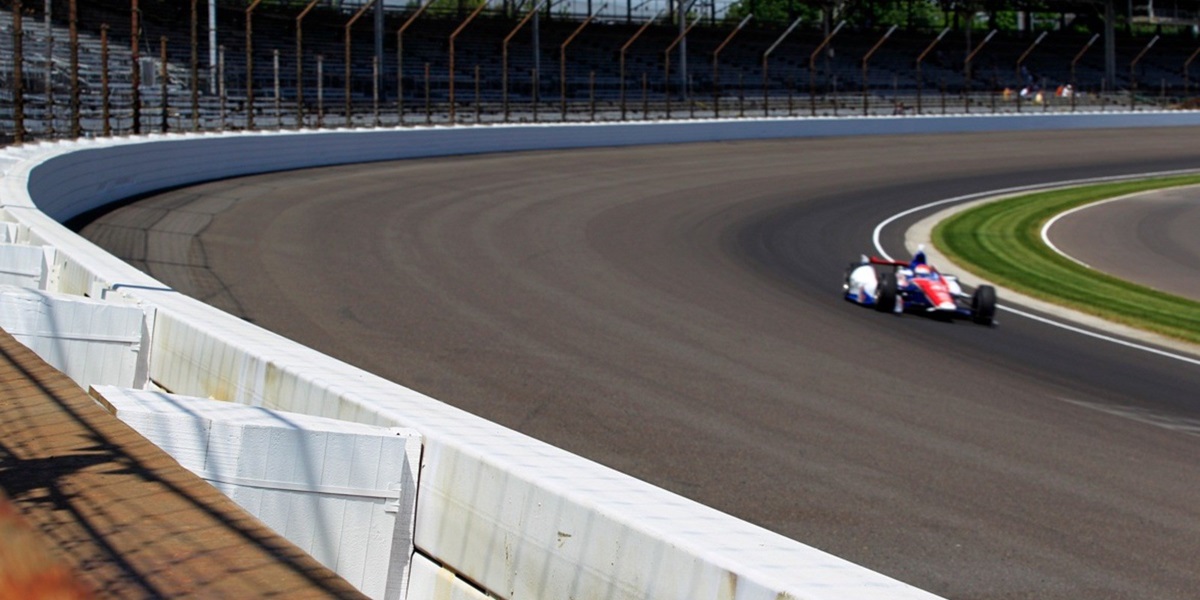
SAFER barrier has accelerated racing safety for 10 years
May 26, 2012 | By Jan Shaffer
It took trial and error, a lot of research, development, engineering and money to get it right, but now, in its 10th anniversary year, the brainchild of former Indianapolis Motor Speedway President Tony George is installed at practically every big track in the nation.
It’s called the SAFER Barrier, and it basically reduces the energy of a crash and takes that energy lower for the driver. The SAFER Barrier was installed around all of the outside walls at the Indianapolis Motor Speedway in time for the 2002 Indianapolis 500.
“We started with a safety committee,” said Phil Casey, now retired from his role as INDYCAR technical director. “Leo Mehl had us in a group … Brian Barnhart, Les MacTaggart, Dr. (Henry) Bock. They’d been doing a little testing at the University of Michigan.”
The first try – called PEDS – was installed inside the fourth turn at the Speedway in 1998. Arie Luyendyk hit it with an International Race of Champions (IROC) car in August 1998. The polyethylene barrier absorbed the impact but broke into pieces that scattered across the track.
“He hit it real hard, and it blew apart,” Casey said. “We talked to Texas A&M and University of Nebraska. We made a trip to Nebraska and did some tests and after a while, we formed a cushion and still stopped the car.
“We ran cars at 150 miles an hour into the barrier…Formula Ford 2000s, then wide cars, then NASCAR sent out some stock cars. We probably crashed about 30 in all. The first version (of the SAFER Barrier) was at the Speedway in 2002 and the second two years later with different lengths of steel tubing. Tony got NASCAR in on it. Jack Arute has the short track at Stafford Springs, Conn., and he put some in there.
“Iowa has it around the whole race track, and it’s the only one that does. It’s one of the biggest things that’s happened in high-speed racing.”
Ron Fowler, assistant director of the Midwest Roadside Safety Facility and research assistant professor at Nebraska, worked on the technical end.
“John Pierce was contracted by IMS to determine if we had the capabilities,” Fowler said. “After we were hired, one of our first tasks was to modify the system that was used when Luyendyk hit in ’98.
“We had a team of research faculty, teaching faculty and graduate students working with materials we hadn’t worked with before. We had a core group of five that later grew to 35 people or more.”
The results turned out to be significant.
“We’ve noticed reductions in loading by 25-35 percent and up to 70 percent in certain situations,” Fowler said.
“The depth and breadth of this job was by far the most intense we had encountered up until that time. It required us to modify our thinking. This, so far, has been a very successful project. That success is only what we hear from drivers when they come out unharmed. That’s how to evaluate it. We continue today to make some minor tweaks to various components.”
Fowler said the concept may have some highway uses.
“We are currently working on taking the SAFER Barrier technology to highway applications,” Fowler said. “Tunnels or tight turns or other high-speed areas.”